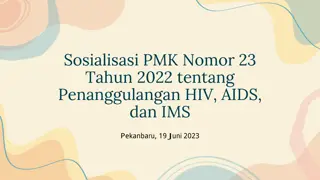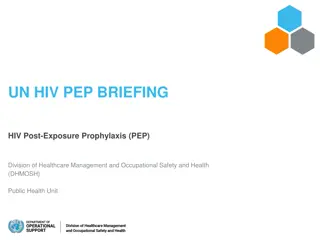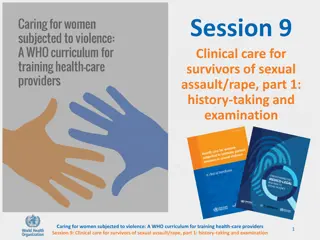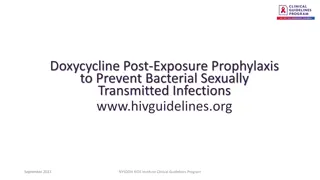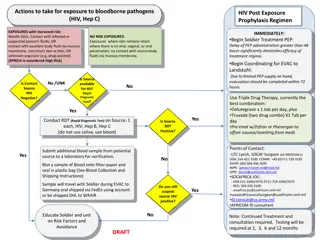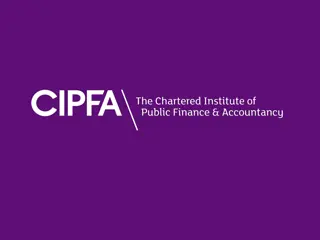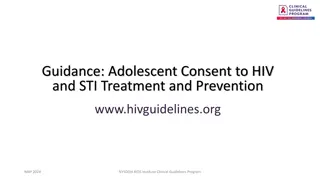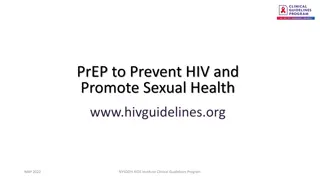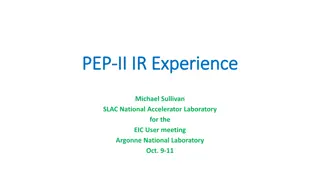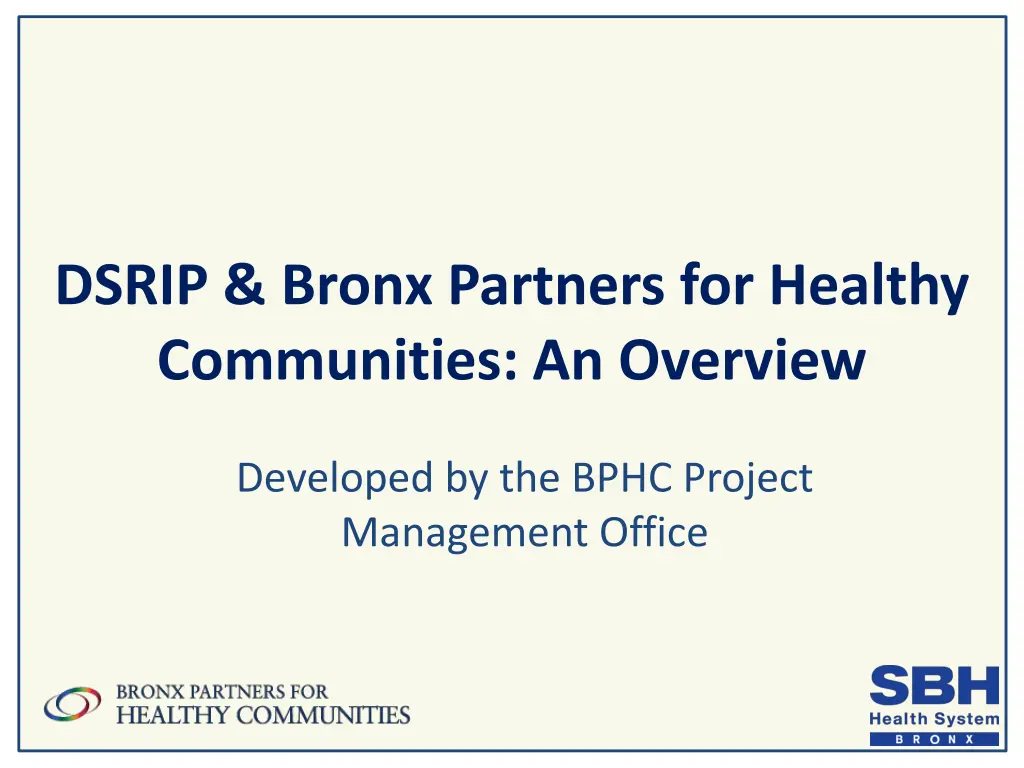
Understanding DSRIP: Transforming Healthcare in New York State
Learn about the Delivery System Reform Incentive Payment (DSRIP) program in New York State, aimed at improving health outcomes, healthcare delivery, and reducing costs. Explore the goals, key components, funding details, and the role of physicians in the Performing Provider System.
Download Presentation

Please find below an Image/Link to download the presentation.
The content on the website is provided AS IS for your information and personal use only. It may not be sold, licensed, or shared on other websites without obtaining consent from the author. If you encounter any issues during the download, it is possible that the publisher has removed the file from their server.
You are allowed to download the files provided on this website for personal or commercial use, subject to the condition that they are used lawfully. All files are the property of their respective owners.
The content on the website is provided AS IS for your information and personal use only. It may not be sold, licensed, or shared on other websites without obtaining consent from the author.
E N D
Presentation Transcript
DSRIP & Bronx Partners for Healthy Communities: An Overview Developed by the BPHC Project Management Office
Overview New York State (NYS) received federal approval to implement a Delivery System Reform Incentive Payment (DSRIP) program that will provide funding for public and safety net providers to transform the NYS health care delivery system. Goals: (1) Achieve the Triple AIM :Better Health, Better Health Care, Lower cost (2) Transform Delivery and payment system to incentivize value over volume (3) Ensure delivery system transformation continues beyond the waiver period through managed care payment reform Key Program Components: Statewide funding initiative for public hospitals and safety net providers Only coalitions of community/regional health providers are eligible DSRIP projects based on a menu of interventions approved by CMS and NYS Payments to providers based on their performance in meeting outcome milestones and state achieving statewide metrics Additional information about the NY State DSRIP program can be accessed here: https://www.health.ny.gov/health_care/medicaid/redesign/delivery_system_reform_incenti ve_payment_program.htm
$8 Billion in New Federal Funding Planning Grants, $70 million State Program Administration, $300 million Overall pot to be allocated, depending on application valuation, into Public Hospital and Safety Net Funds Other MRT Purposes, $1.08 billion DSRIP, $6.42 billion Performance Payments, $6.048 billion 10% of each fund set- aside for high performance payments in years 2 through 5 Interim Access Assurance Fund, $500 million Potential Reductions in Federal Funding for Failure to Meet Statewide Metrics, $381 million
Performing Provider System (PPS) A PPS is a coalition of providers who may submit an application for DSRIP funding; single providers will not be considered PPS Objectives Only applicants with a triggering event are eligible for a SEP. Each PPS must designate a lead safety net (>35% Medicaid patients) coalition provider and establish clear relationships with provider partners (lead will report to State and CMS) Each PPS will identify a proposed population whose care they will be responsible for managing PPS must establish joint budget, funding distribution plan and data sharing agreement The non-safety net providers in a PPS as a group may not receive more than 5% of a project s total valuation
Where do physicians fit into the PPS? Recognizing the many roles that physicians play in health care, physicians may be involved based upon: Role in administration of a health care service provider such as a hospital, clinic, etc Role as a physician within a safety net hospital or other facility, FQHC, safety net clinic, Health Home network Role as medical director in a Medicaid Managed Care Health Plan Role as physician practicing in a practice that meets the safety net definition Role as a physician in a non-safety net practice or facility that provides needed services to a PPS Role as a physician in a practice or facility that receives a vital access provider exception
What is Bronx Partners for Healthy Communities (BPHC)? BPHC is an emerging Performing Provider System in the Bronx led by SBH Health System. This PPS currently consists of: 160 Unique Organizations 780 Total Locations/Sites 501 Other (i.e. Housing, Hospice, Community Based Organizations, LHCSA, etc.) 33 10 Long Term Home Health Care Provider Locations 23 OASAS (Article 32) Provider Locations 8 OPWDD (Article 16) Provider Locations 9 Sole Community Provider Locations Diagnostic & Treatment Center Locations 5 Assisted Living Facility Locations 32 Federally Qualified Healthcare Center Locations 19 Certified Home Health Agency Locations 78 OMH (Article 31) Provider Locations 19 Skilled Nursing Facility Locations 13 Nursing Home Locations 2 Voluntary Hospitals (33 Locations)
SBH As Lead Applicant SBH Health System has received the support and approval to serve as the lead applicant from founding members and the BPHC Steering Committee. Founding Members BPHC Steering Committee 1199 SEIU Healthcare Workers East Acacia Network Bronx United IPA Centerlight Health System Institute for Family Health Montefiore Medical Center Morris Heights Health Center Puerto Rican Family Institute SBH Health System Union Community Health Center Visiting Nurse Service of New York Acacia Network Bronx United IPA Institute for Family Health Montefiore Medical Center Morris Heights Health Center Puerto Rican Family Institute SBH Health System Union Community Health Center
BPHC Geographic Region The Entire Bronx Borough Population: Culturally vibrant community with population of ~1.5 million Medicaid Coverage: Highest rates of Medicaid coverage in the State (59% of Bronx residents over the course of a year) Population Health: Though the Bronx represents only 7% of the State s population, it accounts for 22% of asthma hospitalizations and the diabetes mortality rate is 60% higher than the State s rate Social Factors: Poorest county in New York State with approximately 30% of residents living in poverty, and a 12% unemployment rate. Over a third of the population has unaffordable or inadequate housing.
Project Advisory Committee Structure and Processes The Project Advisory Committee acts as the planning governance for BPHC. SBH acts as the fiduciary to the State SBH Steering Committee approves all plans brought forward by BOC and CDPP Steering Committee Together, the Steering, BOC, and CDPP Committees form the PAC Clinical Delivery and Program Planning (CDPP) Committee Business Operations Committee (BOC) Business Operations work groups* draft plans for the development of centralized services support and infrastructure Care Management and Care Transitions IT & Analytics Finance CVD/Asthma/Diabetes Clinical work groups draft project plans to be reviewed by CDPP Primary Care/Behavioral Health Integration Workforce Development *45 organizations are represented on work groups. There is a total of 113 members across the 7 work groups. Population Health
Member Participation in Planning Efforts From mid-July to today, BPHC has held: 2 All-Member meetings, involving all BPHC participants 6 meetings of the committees composing the PAC, involving 36individuals across 19member organizations 19 work group meetings thus far across the 7 work groups In total, the 7 work groups involve 113individuals across 45 member organizations
DSRIP Project Planning Timeline (Year 0) Project Planning August 31 June 26 December 16 Design Grant Application due State makes baseline data for DSRIP measures available DSRIP Project Plan Application due Mid-Nov. Early March October 22 DSRIP Project Plan Awards made Public comments due on draft DSRIP Project Plan application May 15 August 6 PPS to submit final Network Lists Letter of Intent due Design Grant Awards made August 2014 December 2014 April 2015 May 2014 November 14 Early Sept. April 1 January 20 State releases final electronic DSRIP Project Plan Application Initial PPS Attribution Logic Run for PPS* DSRIP Year 1 begins Public comments due on DSRIP Project Plan applications Red text=Pending State deliverables Late Nov.-Early Dec. *Date likely to be delayed September 22 Final attribution will be made available to PPS NOTE: Timeline may change at State s discretion. State releases draft DSRIP Project Plan Application and Application Review Tool
The DSRIP Ecosystem: BPHCs Role DSRIP OPERATIONS PLAN POST-DSRIP PROVIDERS Execute contracts agreeing to comply with DSRIP program and other requirements Receive funds to support DSRIP activities Agree to follow DSRIP clinical protocols and IT requirements Agree to DSRIP governance rules STAKEHOLDERS Refer patients to PPS system Provide other supports BPHC/SBH Provide centralized services, such as: Training and workforce development IT Centralized data repositories and analytics Performance monitoring & improvement support Regional infrastructure Care/Case management Act as overall operational and fiscal agent Provide governance framework for effective decision-making
Pay for Performance Annual improvement targets will use a methodology of reducing the gap to the goal by 10%. For example, if the baseline data for a measure is 52% and the goal is 90%, the gap to the goal is 38. The target for the project s first year of performance would be a 3.8% increase in the result (target 55.8%). Each subsequent year would continue to be set with a target using the most recent year s data. This will account for smaller gains in subsequent years as performance improves toward the goal or measurement ceiling. Performing Provider Systems may receive less than their maximum allocation if they do not meet metrics and/or if DSRIP funding is reduced because of the statewide penalty.
Main Types of DSRIP Payments Year 1 Year 2 Year 3 Year 4 Year 5 15% 20% 40% Process 60% 15% 80% P4R 15% 85% P4P 65% 25% 45% 20% 15% Source: Attachment I Program Funding and Mechanics *Note: percentage of total funds based on hitting 100% of all milestones
Statewide Performance and Accountability Beginning in Year 3, limits on funding available and provider incentive payments may be subject to reductions based on statewide performance. Statewide performance will be assessed on a pass or fail basis for a set of four milestones. The state must pass all four milestones to avoid DSRIP reductions. If penalties are applied, CMS requires the state to reduce funds in an equal distribution, across all DSRIP projects. The DSRIP high performance fund will not be affected by any penalties.
Resources NYS Delivery System Reform Incentive Payment (DSRIP) Program Web Site: http://www.health.ny.gov/health_care/medicaid/redesign/delivery_system_reform_incentiv e_payment_program.htm Special Terms and Conditions: http://www.health.ny.gov/health_care/medicaid/redesign/docs/special_terms_and_conditio ns.pdf Program Funding and Mechanics Protocol-Attachment I: http://www.health.ny.gov/health_care/medicaid/redesign/docs/program_funding_and_mec hanics.pdf Strategies and Metrics Menu-Attachment J: http://www.health.ny.gov/health_care/medicaid/redesign/docs/strategies_and_metrics_me nu.pdf Timeline and Deliverables Schedule: http://www.health.ny.gov/health_care/medicaid/redesign/docs/timeline_deliverables_sched ule.pdf NYS Waiver Amendment Presentation: http://www.health.ny.gov/health_care/medicaid/redesign/docs/waiver_amendment_update _present.pdf
Thank You! Please visit our website: www.bronxphc.org Contact info@bronxphc.org with DSRIP related questions.

